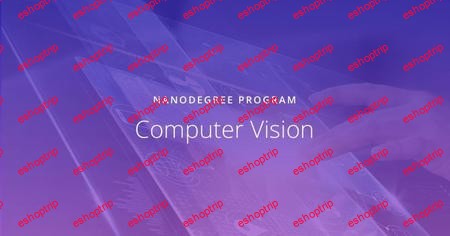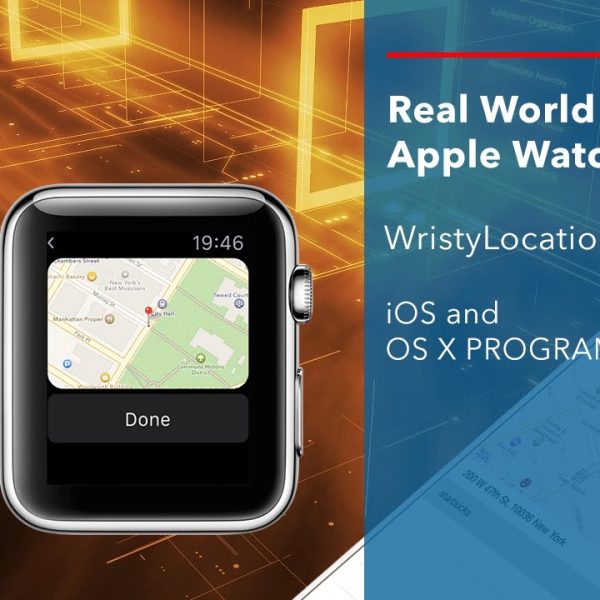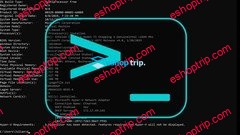WEBRip | English | MP4 | 1280 x 720 | AVC ~54.2 kbps | 29.970 fps
AAC | 126 Kbps | 44.1 KHz | 2 channels | 43:07:35 | 7.8 GB
Genre: Video Tutorial
Data science skills are in high demand, and you’ll finish this program with practical skills needed to land a data science job. You’ll build projects designed with our industry partners using real-world data, and by the end of the program you will be able to build machine learning models includng supervised and unsupervised methods; create and run data pipelines; design experiments; build recommendation systems; deploy solutions to the cloud; and more.
This program is an ideal way to move into a data science career, and by the end of the program you’ll be ready to apply for data science jobs.
Term One is “Machine Learning for Data Scientists.” Across three sections, students focus on Supervised Learning, Deep Learning, and Unsupervised Learning. Featured projects include using Kaggle to build an algorithm for identifying charity donors, and creating an image classifier. Term Two is “Applied Data Science,” and the focus is on solving problems with data science, as well as software and data engineering. As a capstone project, students build their own data science portfolio project.
The Data Scientist Nanodegree program is for students who possess strong programming and data analysis skills, and is positioned as the next step for graduates of the Data Analyst Nanodegree program. Those interested in advanced analytics without programming are encouraged to consider the Business Analyst Nanodegree program, and beginners are invited to explore our Data Foundations Nanodegree program.
Content:
Part 01-Module 01-Lesson 01_Welcome to the Data Scientist Nanodegree program
Part 01-Module 02-Lesson 01_Get Help from Peers and Mentors
Part 01-Module 02-Lesson 02_Get Help with Your Account
Part 01-Module 03-Lesson 01_Setting Up Your Computer
Part 01-Module 04-Lesson 01_What Is Ahead
Part 02-Module 01-Lesson 01_Machine Learning Bird’s Eye View
Part 02-Module 01-Lesson 02_Linear Regression
Part 02-Module 01-Lesson 03_Perceptron Algorithm
Part 02-Module 01-Lesson 04_Decision Trees
Part 02-Module 01-Lesson 05_Naive Bayes
Part 02-Module 01-Lesson 06_Support Vector Machines
Part 02-Module 01-Lesson 07_Ensemble Methods
Part 02-Module 01-Lesson 08_Model Evaluation Metrics
Part 02-Module 01-Lesson 09_Training and Tuning
Part 02-Module 01-Lesson 10_Finding Donors Project
Part 03-Module 01-Lesson 01_Introduction to Neural Networks
Part 03-Module 01-Lesson 02_Implementing Gradient Descent
Part 03-Module 01-Lesson 03_Training Neural Networks
Part 03-Module 01-Lesson 04_Keras
Part 03-Module 01-Lesson 05_Deep Learning with PyTorch
Part 03-Module 01-Lesson 06_Image Classifier Project
Part 04-Module 01-Lesson 01_Clustering
Part 04-Module 01-Lesson 02_Hierarchical and Density Based Clustering
Part 04-Module 01-Lesson 03_Gaussian Mixture Models and Cluster Validation
Part 04-Module 01-Lesson 04_PCA
Part 04-Module 01-Lesson 05_Random Projection and ICA
Part 04-Module 01-Lesson 06_Project Identify Customer Segments
Part 05-Module 01-Lesson 01_Congratulations!
Part 06-Module 01-Lesson 01_Why Python Programming
Part 06-Module 01-Lesson 02_Data Types and Operators
Part 06-Module 01-Lesson 03_Control Flow
Part 06-Module 01-Lesson 04_Functions
Part 06-Module 01-Lesson 05_Scripting
Part 06-Module 01-Lesson 06_NumPy
Part 06-Module 01-Lesson 07_Pandas
Part 07-Module 01-Lesson 01_Basic SQL
Part 07-Module 01-Lesson 02_SQL Joins
Part 07-Module 01-Lesson 03_SQL Aggregations
Part 07-Module 01-Lesson 04_SQL Subqueries Temporary Tables
Part 07-Module 01-Lesson 05_SQL Data Cleaning
Part 07-Module 01-Lesson 06_[Advanced] SQL Window Functions
Part 07-Module 01-Lesson 07_[Advanced] SQL Advanced JOINs Performance Tuning
Part 08-Module 01-Lesson 01_Data Visualization in Data Analysis
Part 08-Module 01-Lesson 02_Design of Visualizations
Part 08-Module 01-Lesson 03_Univariate Exploration of Data
Part 08-Module 01-Lesson 04_Bivariate Exploration of Data
Part 08-Module 01-Lesson 05_Multivariate Exploration of Data
Part 08-Module 01-Lesson 06_Explanatory Visualizations
Part 08-Module 01-Lesson 07_Visualization Case Study
Part 09-Module 01-Lesson 01_Shell Workshop
Part 10-Module 01-Lesson 01_What is Version Control
Part 10-Module 01-Lesson 02_Create A Git Repo
Part 10-Module 01-Lesson 03_Review a Repo’s History
Part 10-Module 01-Lesson 04_Add Commits To A Repo
Part 10-Module 01-Lesson 05_Tagging, Branching, and Merging
Part 10-Module 01-Lesson 06_Undoing Changes
Part 10-Module 01-Lesson 07_Working With Remotes
Part 10-Module 01-Lesson 08_Working On Another Developer’s Repository
Part 10-Module 01-Lesson 09_Staying In Sync With A Remote Repository
Part 11-Module 01-Lesson 01_Introduction
Part 11-Module 01-Lesson 02_Vectors
Part 11-Module 01-Lesson 03_Linear Combination
Part 11-Module 01-Lesson 04_Linear Transformation and Matrices
Part 12-Module 01-Lesson 01_Descriptive Statistics – Part I
Part 12-Module 01-Lesson 02_Descriptive Statistics – Part II
Part 12-Module 01-Lesson 03_Admissions Case Study
Part 12-Module 01-Lesson 04_Probability
Part 12-Module 01-Lesson 05_Binomial Distribution
Part 12-Module 01-Lesson 06_Conditional Probability
Part 12-Module 01-Lesson 07_Bayes Rule
Part 12-Module 01-Lesson 08_Python Probability Practice
Part 12-Module 01-Lesson 09_Normal Distribution Theory
Part 12-Module 01-Lesson 10_Sampling distributions and the Central Limit Theorem
Part 12-Module 01-Lesson 11_Confidence Intervals
Part 12-Module 01-Lesson 12_Hypothesis Testing
Part 12-Module 01-Lesson 13_Case Study AB tests
Part 12-Module 01-Lesson 14_Regression
Part 12-Module 01-Lesson 15_Multiple Linear Regression
Part 12-Module 01-Lesson 16_Logistic Regression
Part 13-Module 01-Lesson 01_Welcome to the Data Scientist Nanodegree Program
Part 13-Module 01-Lesson 02_Get Help from Peers and Mentors
Part 13-Module 01-Lesson 03_Get Help with Your Account
Part 13-Module 01-Lesson 04_The Skills That Set You Apart
Part 14-Module 01-Lesson 01_The Data Science Process
Part 14-Module 01-Lesson 02_Communicating to Stakeholders
Part 14-Module 01-Lesson 03_Project Write A Data Science Blog Post
Part 14-Module 02-Lesson 01_Optimize Your GitHub Profile
Part 15-Module 01-Lesson 01_Introduction to Software Engineering
Part 15-Module 01-Lesson 02_Software Engineering Practices Pt I
Part 15-Module 01-Lesson 03_Software Engineering Practices Pt II
Part 15-Module 01-Lesson 04_Introduction to Object-Oriented Programming
Part 15-Module 01-Lesson 05_Portfolio Exercise Upload a Package to PyPi
Part 15-Module 01-Lesson 06_Web Development
Part 15-Module 01-Lesson 07_Portfolio Exercise Deploy a Data Dashboard
Part 16-Module 01-Lesson 01_Introduction to Data Engineering
Part 16-Module 01-Lesson 02_ETL Pipelines
Part 16-Module 01-Lesson 03_NLP Pipelines
Part 16-Module 01-Lesson 04_Machine Learning Pipelines
Part 16-Module 02-Lesson 01_Project Disaster Response Pipeline
Part 16-Module 03-Lesson 01_Strengthen Your Online Presence Using LinkedIn
Part 17-Module 01-Lesson 01_Intro to Experiment Design and Recommendation Engines
Part 17-Module 02-Lesson 01_Concepts in Experiment Design
Part 17-Module 02-Lesson 02_Statistical Considerations in Testing
Part 17-Module 02-Lesson 03_AB Testing Case Study
Part 17-Module 02-Lesson 04_Portfolio Exercise Starbucks
Part 17-Module 03-Lesson 01_Introduction to Recommendation Engines
Part 17-Module 03-Lesson 02_Matrix Factorization for Recommendations
Part 17-Module 04-Lesson 01_Recommendation Engines
Part 18-Module 01-Lesson 01_Data Scientist Capstone
Part 19-Module 01-Lesson 01_Congratulations!
Part 20-Module 01-Lesson 01_Neural Networks
Part 20-Module 01-Lesson 02_Deep Neural Networks
Part 20-Module 01-Lesson 03_Convolutional Neural Networks











Reviews
There are no reviews yet.